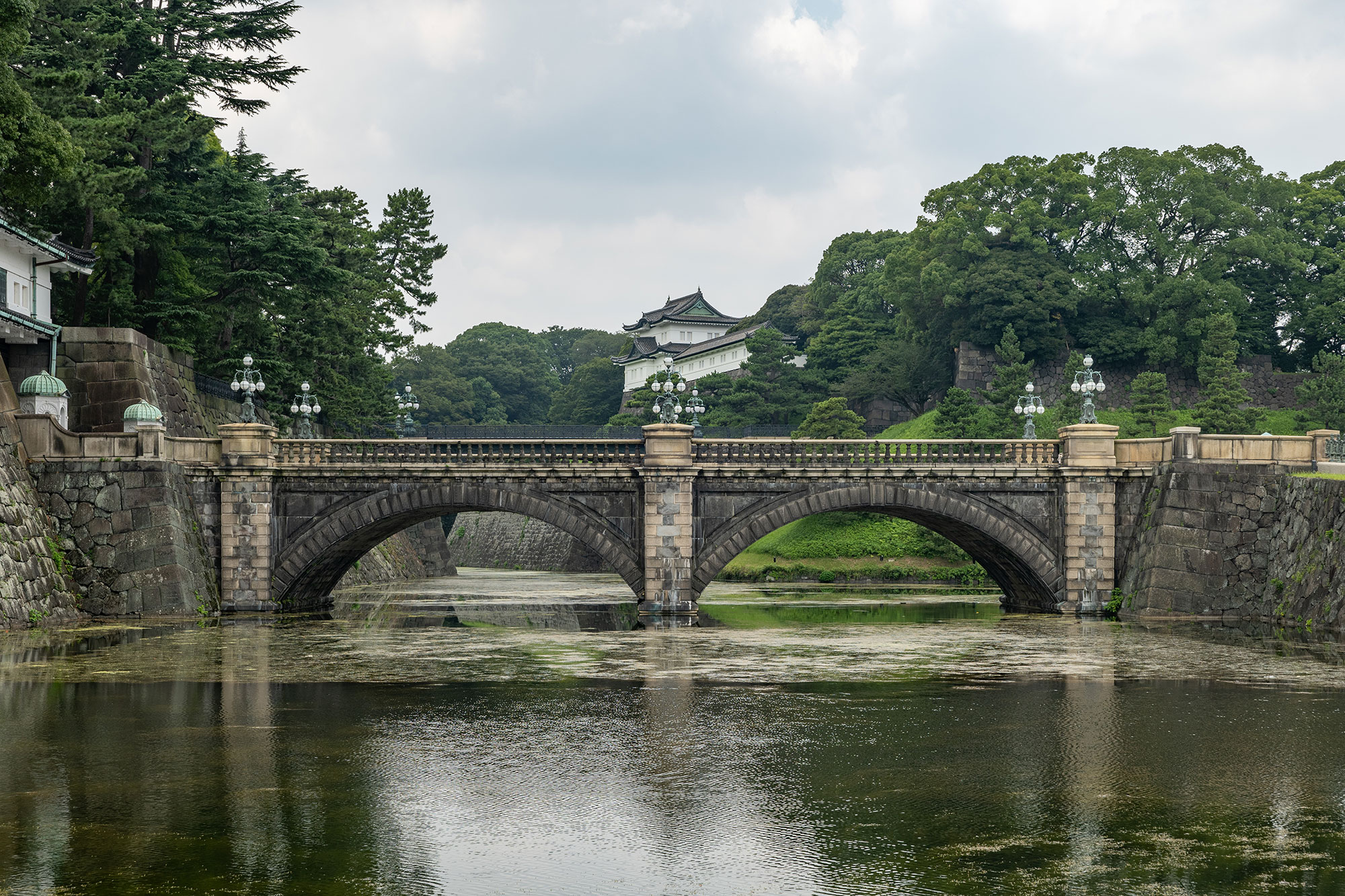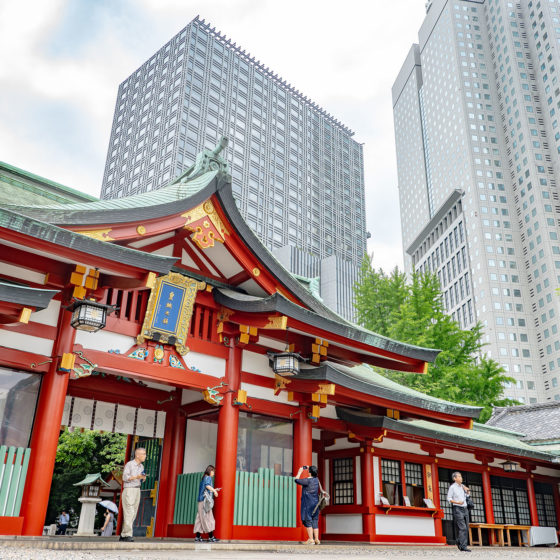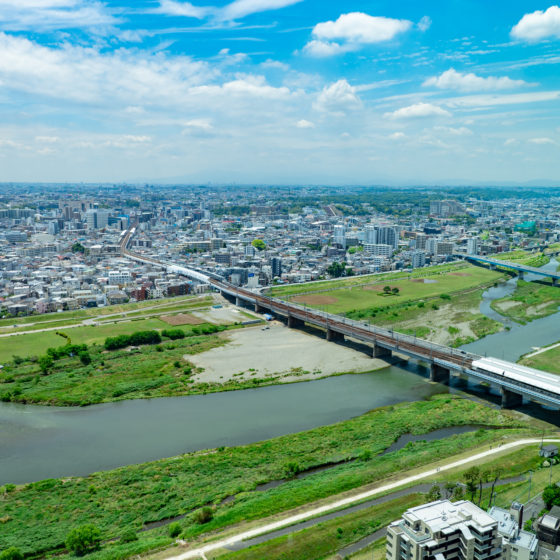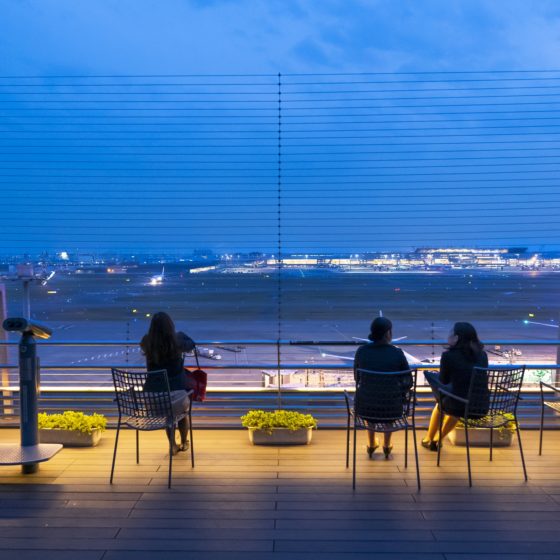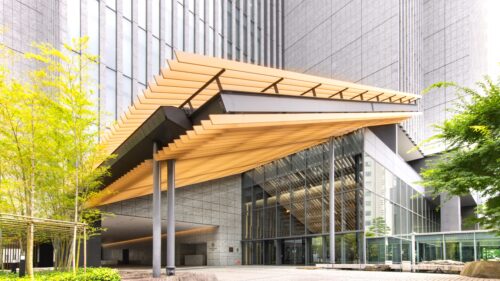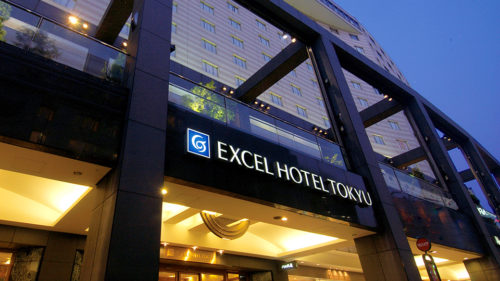- The flow of tourists throughout the year who visit the Imperial Palace area, an oasis of central Tokyo, never ceases. Attractions include historical sites on view while walking amid rich nature each season in beautiful gardens. The area, so vast it can’t possibly be covered in a day, has four sections.
- The northernmost section of Kitanomaru Park was originally the residence of the Tokugawa clan within Edo Castle, complete with the extant gates of Tayasu-mon and Shimizu-mon from the Edo period (1603–1868). Ponds and pathways invite walkers and joggers throughout the year, with the particularly appealing cherry blossom season. Trees in full bloom along the moat of Chidorigafuchi create magnificent scenery prized by visitors from around Japan and the world. The compelling palette of autumn is nicely matched by the presence of the nearby National Museum of Modern Art, a wonderful combination of art and nature.
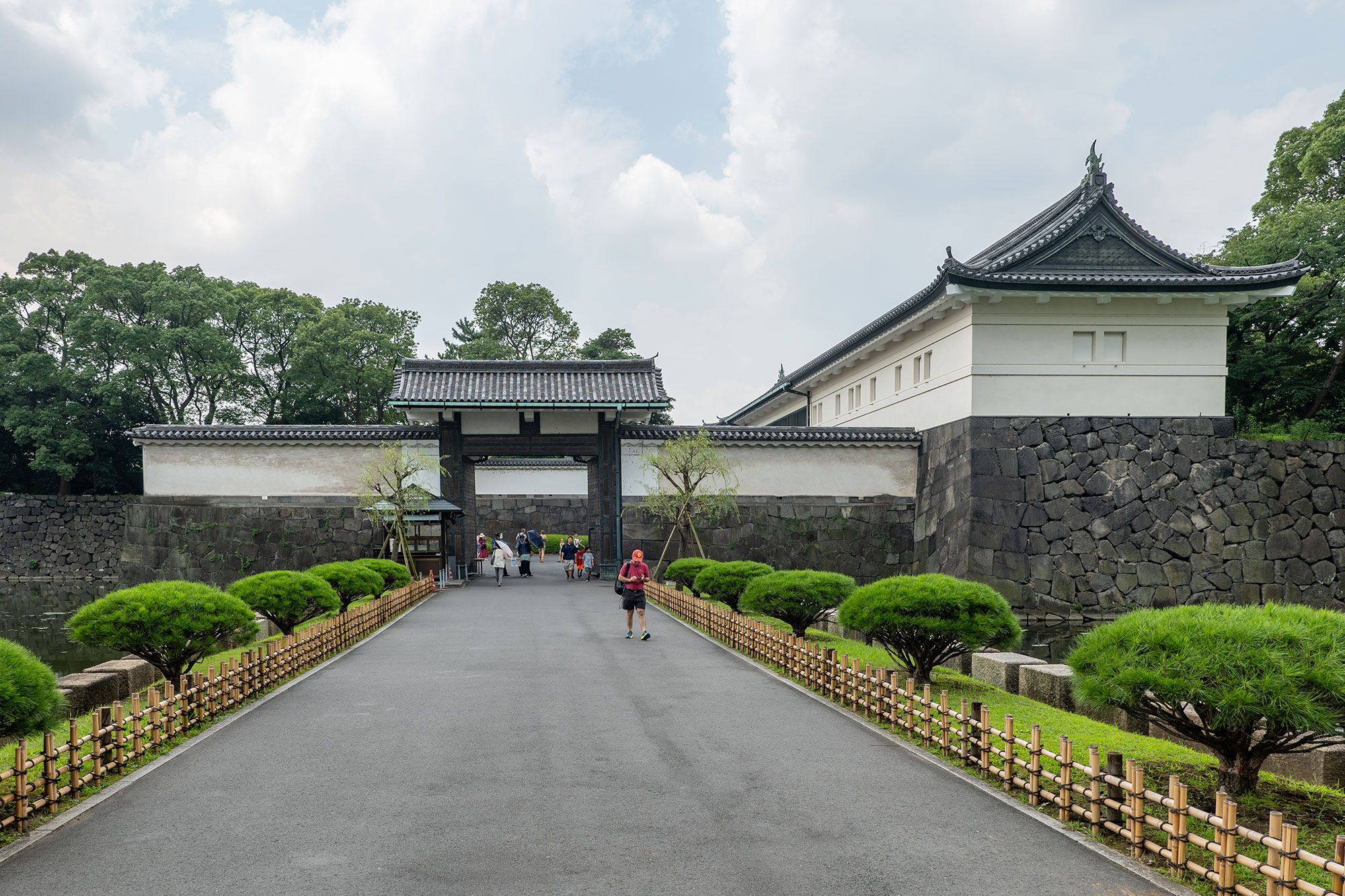
Ote-mon 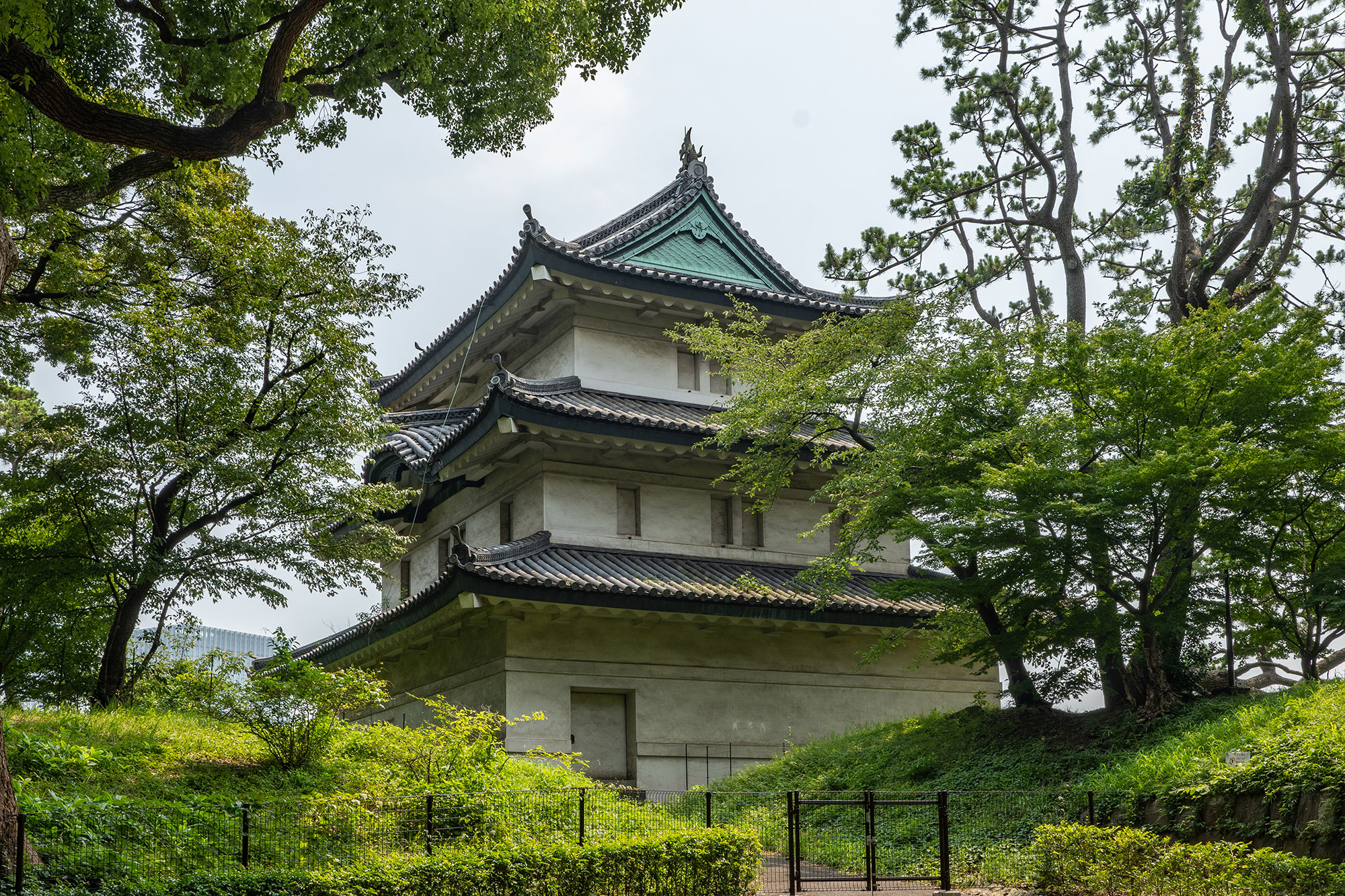
Fujimi-yagura - East Gardens of the Imperial Palace are on the south side of the park. During Edo times, the Honmaru main building, Ninomaru, and the Honmaru Palace of Edo Castle stood here. Many have disappeared but the legacy lives on in gardens, yagura turrets, and tenshudai, the stonewall foundation for the castle tower and its donjon. Ascend a gentle slope from Ote-mon, the castle’s main gate, and beyond the spread of green grass stands enormous stonework that makes up the castle ruins of Honmaru and donjon base. In the past, many lords daily paid their respects to Shogun Tokugawa, who lived in the castle to administer the shogunate. The gazebo-like structure of Fujimi-yagura was a watchtower and symbol of authority.
- Also accessed via Ote-mon is the Museum of the Imperial Collections (Sannomaru Shozokan). Art passed down through the Imperial Household comprises books, paintings, crafts, picture scrolls, and other works of historical value. A rest area and shop are nearby.
- The third section is the Imperial Palace proper, a private area west of the East Gardens in a central location for Fukiage Omiya Palace, Three Palace Sanctuaries, Imperial Household Agency, and more.
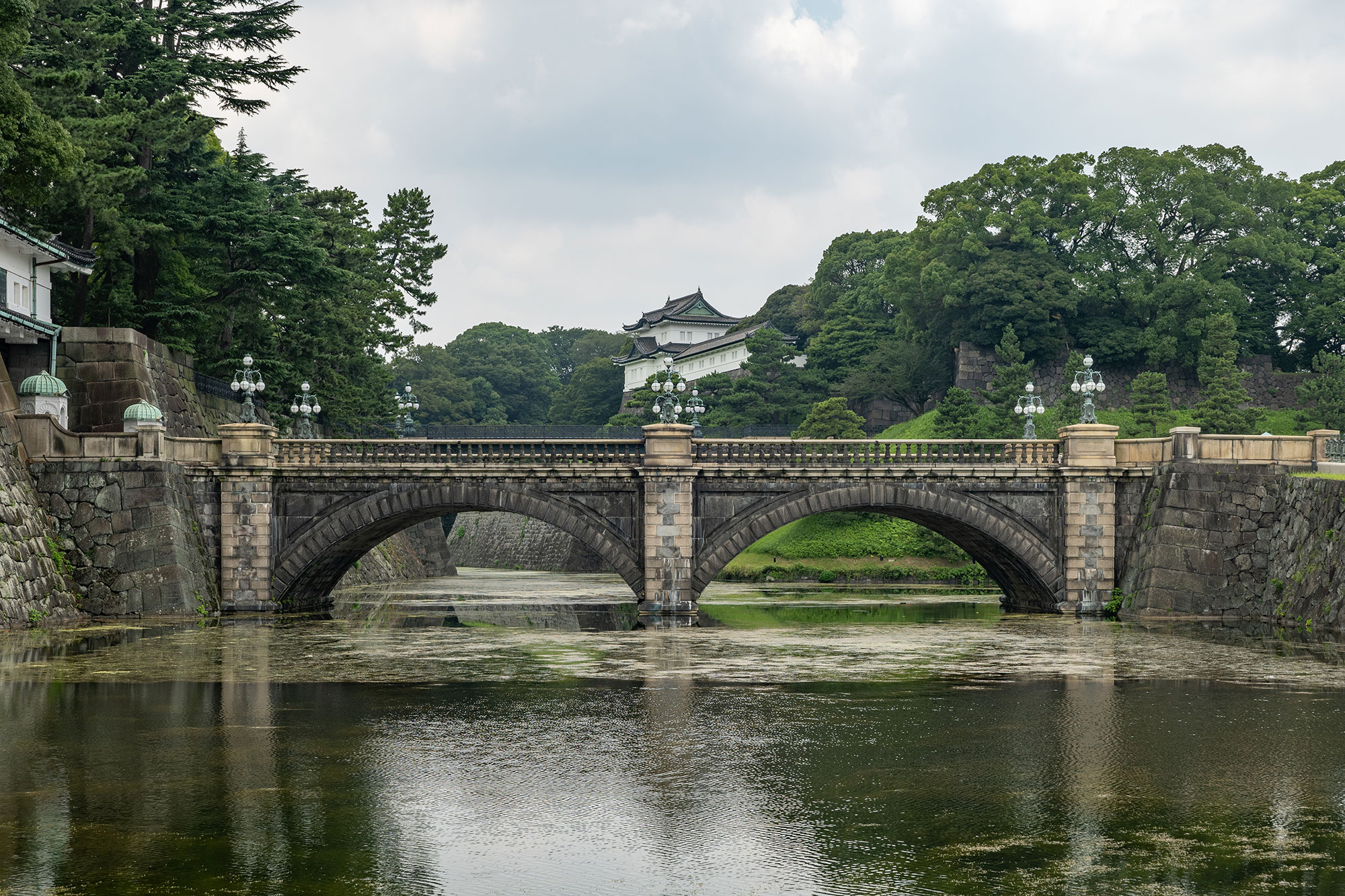
Nijubashi - A short walk from JR Tokyo Station brings you to Kokyogaien National Garden (Garden Plaza), the fourth section of the palace area. In sight of the lush green lawn are some 2,000 beautifully pruned Japanese black pines. Walk a bit further on and, yes, your eyes don’t deceive you: it’s Spectacles Bridge (Nijubashi), a twofold structure. The front bridge, Seimon Ishibashi, is of stone, and the rear bridge, Seimon Tetsubashi, is of iron. You may enjoy the view but not cross it, because the double-bridge leads to the private area of the Imperial Palace. On the bridge’s south side stands Sakurada-mon, one of the gates built in the inner wall of Edo Castle and designated an Important Cultural Asset (1961). The moat surrounding the whole area creates a breathtaking view characteristic of Kokyogaien.



